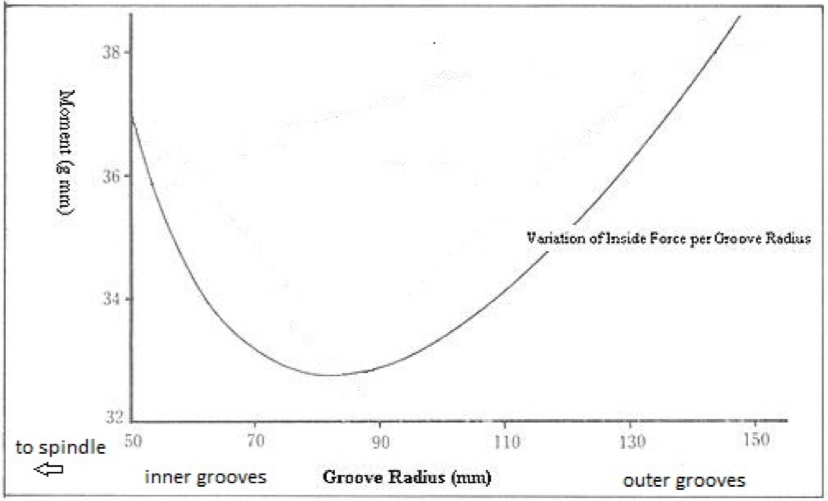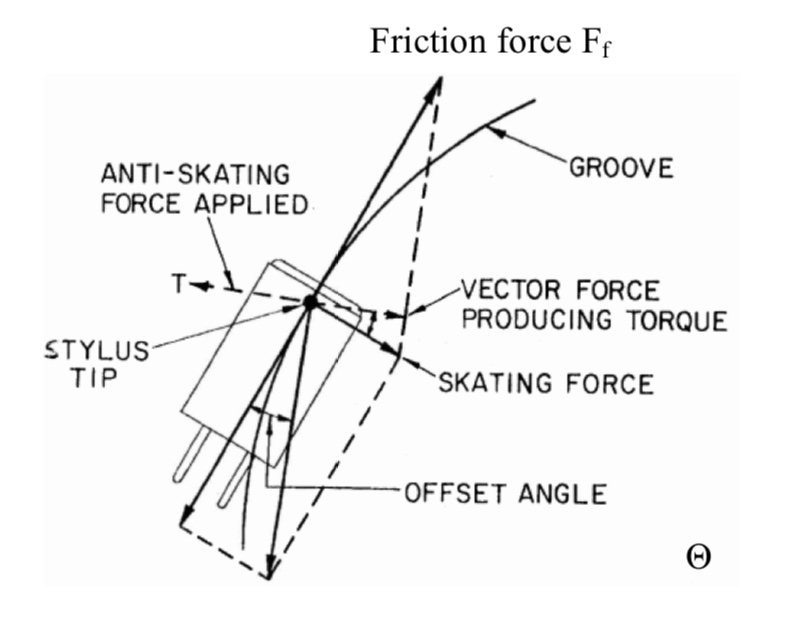Hello
@slawekt,
Following on from our discussion of dynamic forces at the phono cartridge from the other thread last week, I remembered having a copy of a document here that neatly summarizes various bits of articles going back as far as Electronics, from 1945. Anyway, I managed to find a link to an English version of this same tome on-line, although it seems to have been edited, going so far as the authors name being removed. Credit should go to Klaus Rampelmann, Den Haag (Niederlande), Mai 2015 (
original article link).
The English edited version document is also entitled 'Skating Force and Antiskating' (
link). The 'Annex' portion of this tome does not exist in the original Rampelmann summary.
The part that triggered my memory of this after last weeks posting was
Fig. 11 – vector diagram of forces at the headshell (from [11]) in plan view
. Note that skating force will only be at a perfect right angle to the longitudinal friction force F
f at the two tangent points.
The aspect of this that I believe to be most relevant to the subject of this thread, has to do with looking at the forces applied from an elevation view perspective. The corresponding text of the article helps here, however, it is easy to see how rotational torque is applied to the stylus/cantilever (ignore 'vector.', a document formatting error). The square formed by solid line vector R* and the solid line portion of vector L* (as they relate to vertical tracking force vector Fv) would be for tangental tracking tonearms. The dotted line extension of vector L* indicates the extension of force due to tonearm offset which results in the net tracking force vector L (equal to Fv + Fs; Force vertical + Force skating).
WRT
@Cool_jeeves' issue here, I am convinced that the anti-skate mechanism is revealing compromised rotational torsion resistance in the re-cantilevered retip, vis-à-vis azimuth misalignment being the only geometric foil to accurate channel balance. I suspect that with AS set to zero the symptom may reduce, disappear, or even reverse channels over the first minutes of play where skating force is highest; see graph, post #30).
[11] Alexandrovich, “New approach to tone arm design”, Audio Engineering Society preprint 149 (1960)




